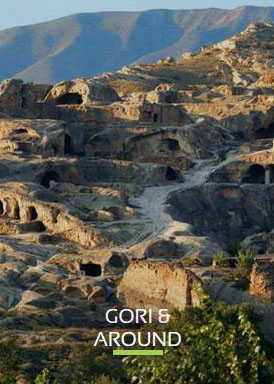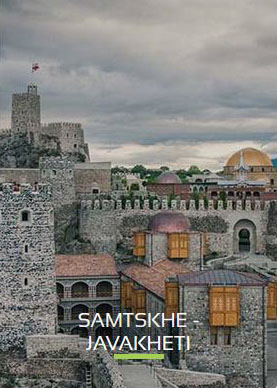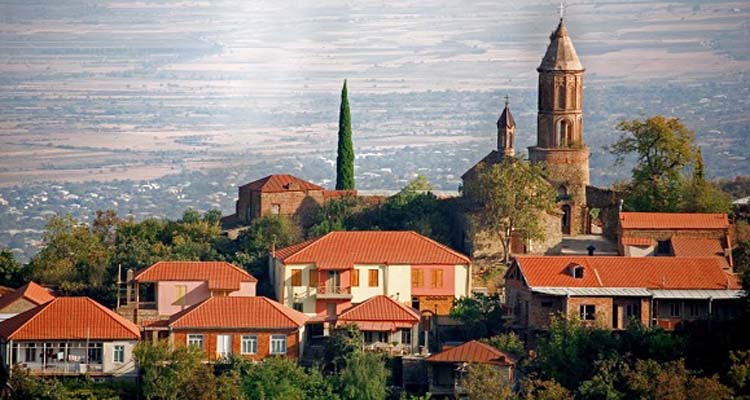
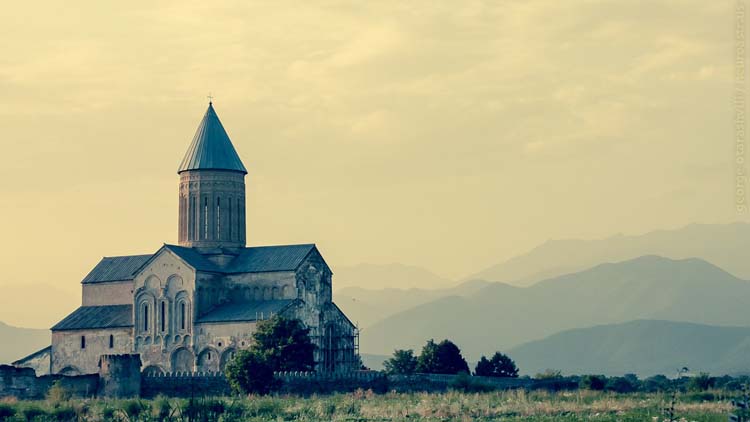
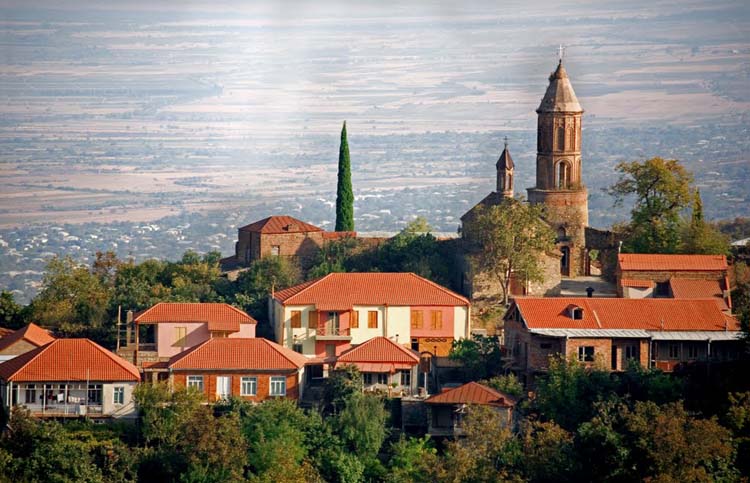

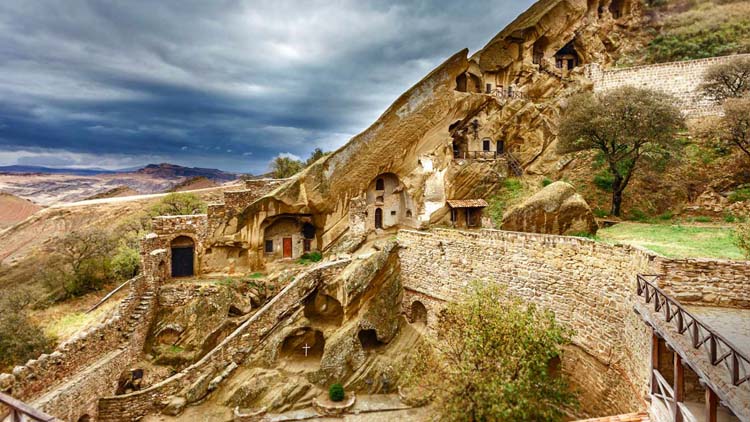
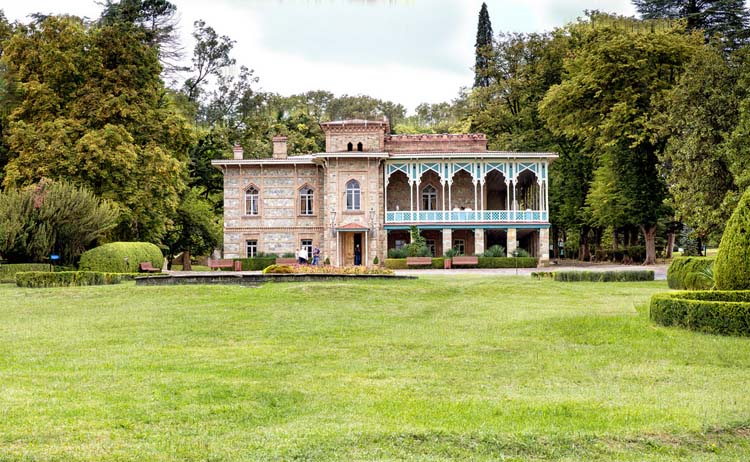
The Cradle of Wine
KAKHETI
https://goo.gl/maps/dnqAt34ECmG2
DAVID GAREJI
Tel: +995 574 80 55 63
Here is contact information:
+995 551 95 14 47
SIGHNAGHI
BODBE MONASTERY
Wandering through the resplendent monastery garden bestows a sense of tranquility and serenity upon the visitor. Additionally, a venture down to the sanctified spring of St. Nino offers the opportunity to immerse oneself in its revitalizing, frigid waters. Originally erected during the 9th century, the monastery underwent substantial renovations, notably in the 17th century. Presently, the monastery serves as an active nunnery, a testament to its enduring spiritual purpose.
TELAVI
The roots of Telavi's antiquity extend back to the Bronze Age, as evidenced by early archaeological discoveries. The chronicles that have endured from the 2nd century AD contribute to our understanding of Telavi's early history. An evolution into a significant political and administrative epicenter transpired during the 8th century AD.
During the 10th to the 12th century AD, Telavi ascended to the status of the capital for the Kingdom of Kakheti. The city reached the zenith of its political and economic influence during the "Golden Era" of the Georgian State, spanning the 12th and 13th centuries. However, following the splintering of the unified Georgian Kingdom in the 15th century, Telavi's prominence waned, relegating it to a role as an ordinary trading and craftsmanship hub. It wasn't until the 17th century that Telavi's political significance was rekindled, this time as the capital of the Kakhetian kingdom.
- Dzveli Galavani (old walls) - a fortress constructed during the reign of the early Kakhetian monarchs in the 9th to 10th centuries AD.
- Church of St. Mary, built in the 16th century AD.
- Church of the Holy Trinity, dating back to the 6th century AD.
- "Batonis Tsikhe" fortress (fortress of the master), an impressive structure from the 17th century AD, serving as one of the few remarkably preserved medieval royal palaces in Georgia.
At present, Telavi is connected to Tbilisi via two highways. The shorter route, spanning approximately 96 km, traverses the elevated terrains of the Gombori Mountain Range, offering scenic splendor along a well-maintained path, making it a recommended option. Alternatively, a longer route of around 156 km winds through Kakheti's rural expanses.
TSINANDALI MUSEUM
The Tsinandali garden underwent renewal in 1887, later transitioning to state ownership in 1917. In 1947, the estate underwent transformation into a museum.
Embark on a stroll through the 19th-century cellars while savoring wines crafted in the 21st century.
Delight in a peerless assemblage of approximately 16,500 wine bottles sourced from diverse corners of the globe.
Behold a weathered bottle of Saperavi wine, produced in the year 1836 by the domain's owner, Alexander Chavchavadze.
Saunter through a British-style park, a landscaped marvel envisioned by British horticulturists during the 19th century.
Encounter the enchanting "Alley of Love," a local legend asserting that those who traverse it from end to end, eyes closed, shall see their heart's desire realized.
ALAVAERDI MONASTERY
GREMI CHURCH
Gremi stands as a notable architectural relic from the 16th century, comprising the regal citadel and the Church of the Archangels, situated within Kakheti. This complex, now all that remains of the once-thriving town of Gremi, can be found southwest of the contemporary village bearing the same name, nestled within the Kvareli district. The site rests 175 kilometers to the east of Tbilisi.
During the 16th and 17th centuries, Gremi flourished as the capital of the Kingdom of Kakheti. Established by Levan of Kakheti, it thrived as a vibrant trading hub along the Silk Road and served as a royal abode until it was devastated by the forces of Shah Abbas I of Persia in 1615. The town's former prosperity remained elusive, prompting the Kakheti monarchs to relocate their capital to Telavi in the mid-17th century.
The expanse of the town appears to have encompassed approximately 40 hectares, consisting of three core sectors: the Archangels’ Church complex, the royal residence, and the commercial quarter.
Perched atop a hill, the Archangels’ Church complex encompasses the Church of the Archangels Michael and Gabriel, a three-tiered castle, a bell tower, and a wine cellar (marani). A protective wall envelops this enclave, adorned with embrasures, turrets, and towers. Vestiges of a concealed tunnel leading to the Ints’obi River have also endured.
The Church of the Archangels, erected in 1565 and adorned with frescoes by 1577, assumes the form of a cruciform domed structure, predominantly crafted from stone. Its architectural blueprint harmonizes traditional Georgian masonry with a local interpretation of contemporary Iranian design sensibilities. The edifice boasts entrances on its western, southern, and northern sides. Internally, a dome graces the sanctuary, upheld by corner piers and two foundational columns. The facade is divided into three arched sections, while the dome rests upon an arcaded drum punctuated by eight windows.
Within the bell tower, a museum unfolds, housing an array of archaeological artifacts and a cannon from the 16th century, offering a glimpse into history's pages.
NEKRESI MONASTERY
Nekresi emerges as a significant antiquated settlement nestled within Kakheti, situated within the contemporary confines of Kvareli Municipality. Its origins can be traced back to the 2nd and 1st centuries BC. During the 4th century AD, the monarch Thrdat undertook the construction of a church on this very site. This church, in subsequent years, provided sanctuary to Abibus, one of the esteemed Assyrian fathers, during the latter part of the 6th century. It was around this juncture that the Diocese of Nekresi came into being, a presence that endured until the 19th century.
Recently, a comprehensive restoration initiative has breathed new life into the church. The endeavor encompassed the meticulous repair of stone masonry, the reconstruction of the roof, and the addition of windows, effectively rekindling the church's historical essence.
IKALTO MONASTERY
SHUAMTA MONASTERIES
In the vicinity of Telavi, within the village of Shuamta, a sight awaits that reveals the remnants of the antiquated Shuamta Monastery alongside its more contemporary counterpart, the New Shuamta Monastery. Divergent in architectural style, these two monastic enclaves bear the imprints of distinct eras of construction.
The elder of the two, Old Shuamta Monastery, stands as a complex housing multiple venerable churches. Foremost is the diminutive church at the forefront, which traces its origins back to the 5th century AD. Adjacent to it are two larger and smaller domed churches, a testament to the 7th century. The artistic canvas of these structures was enriched by intricate frescoes during the 12th century.
In a contrasting epoch, New Shuamta Monastery emerged in the 16th century, remaining an active center of devotion to this day. Within its encompassing embrace, the grand temple, a towering bell tower, and the enclosing walls intermingle to form the monastery complex. According to local lore, this monastery's genesis is intertwined with Queen Tina of Kakheti. As a young girl, she was visited by a dream that beckoned her to erect an Orthodox sanctuary. The dream unveiled the location of the future monastery, a terrain initially unfamiliar to Tina. It wasn't until her marriage to a Kakhetian prince and her subsequent journeys across Georgia that the landscape of her vision materialized before her eyes. This serendipitous recognition prompted the foundation of the monastery, perpetuating the legend's narrative.
LAKE RESORTS
In Kakheti there are 2 lake resorts. Lopota and Kvareli. Both are situated near small lakes in very beautiful area. Both resorts have very good infrastructure and offer very good leisure and relaxing surroundings. Both resorts are pretty highly priced.
You can see more details at their websites:
Lopota Lake Resort
For more information on those and other National Parks in Georgia please visit our National Parks page.


 ქართული
ქართული
 Русский
Русский


